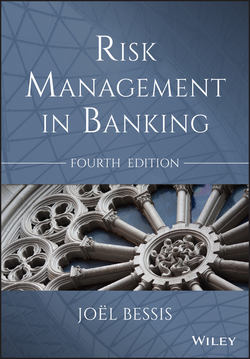Читать книгу Risk Management in Banking - Bessis Joël - Страница 14
На сайте Литреса книга снята с продажи.
2
BANKING REGULATIONS OVERVIEW
2.1 Regulation Principles
ОглавлениеThe primary purpose of risk regulations is to prevent systemic risk, or the risk of collapse of the entire system due to interconnections between financial firms. However, regulators face dilemmas when attempting to control risks.
Providing more freedom to financial firms has been a long-standing argument for avoiding too many regulations. But relying on codes of conduct, rather than rules, would imply relying on self-discipline, or “self-regulation”, which would not inspire trust in the system.
The financial system is subject to moral hazard. Moral hazard is a situation in which a party is more likely to take risks because the costs that could result will not be borne by the party taking the risk. It results in a tendency to be more willing to take a risk, knowing that the potential costs or burdens of taking such risk will be borne, in whole or in part, by others.
Any insurance mechanism potentially generates moral hazard. One the oldest regulations is deposit insurance. Under deposit insurance, depositors are guaranteed the value of their holdings in banks, subject to a cap, that varies across jurisdictions. The regulation provides some safety to depositors, but it does not have much effect on the risk-taking behavior of banks, as depositors are not able to impose a discipline on banks. The protection of bank depositors is an insurance potentially generating moral hazard in the absence of prior penalty for taking risks.
The limited liability of shareholders is another source of the lack of self-discipline. A signi-ficant increase of risk can potentially lead to a risk-maximizing behavior. When risks are already high, shareholders have not much to lose and they might prefer to make riskier bets that increase the chances of failing. When banks face serious difficulties, the barriers that limit risks disappear.
The “too big to fail” issue is a potential source of moral hazard. It refers to a situation where no large institution can be allowed to fail for fear of contagion to many others. Many big firms are lending to large financial firms, and would incur large losses if these fail. The domino effect refers to the cascading effect of the failure of large institutions, triggering the failure of others, which, in turn, triggers another wave of failures. Because of fear of such domino effect, the regulators might not allow large institutions to fail, generating moral hazard for the major financial firms. The issue arises from the “interconnectedness” of large financial institutions.
The financial crisis demonstrated that such issues were not hypothetical. In the United States, after assisting in the bail-out of some large financial firms, the financial authorities let Lehman Brothers down in 2008, which is considered as the critical event in the development of the financial crisis. Perhaps the authorities wished to demonstrate that no one single firm was too big to fail. But it ended up in a situation where systemic risk materialized.
Regulations aiming at resolving issues occurring in the event of failure, such as deposit insurance, help to ensure some trust in the system. The resolution plans for an orderly dismantling of large firms, promoted by regulators following the crisis, are another example. But they are after-the-fact rules that do not prevent banks from taking too much risk.
The core concept of risk regulations is the “capital adequacy” principle, which imposes a capital base commensurate with risks to which each bank is exposed. Instead of “dos and don'ts”, banks need to have enough capital to make their risks sustainable.
If capital is high enough to absorb large losses, the banks would be safe. The size of the capital base depends on how much risk banks are taking. Capital-based rules raise implementation issues, as the capital charges of banks turn out to be a quantified assessment of their risks. Guidelines for regulations are defined by a group of regulators meeting in Basel at the Bank of International Settlement (BIS), hence the name of “Basel” Accords for the successive rounds of regulations since the initial Basel 1 Accord.
